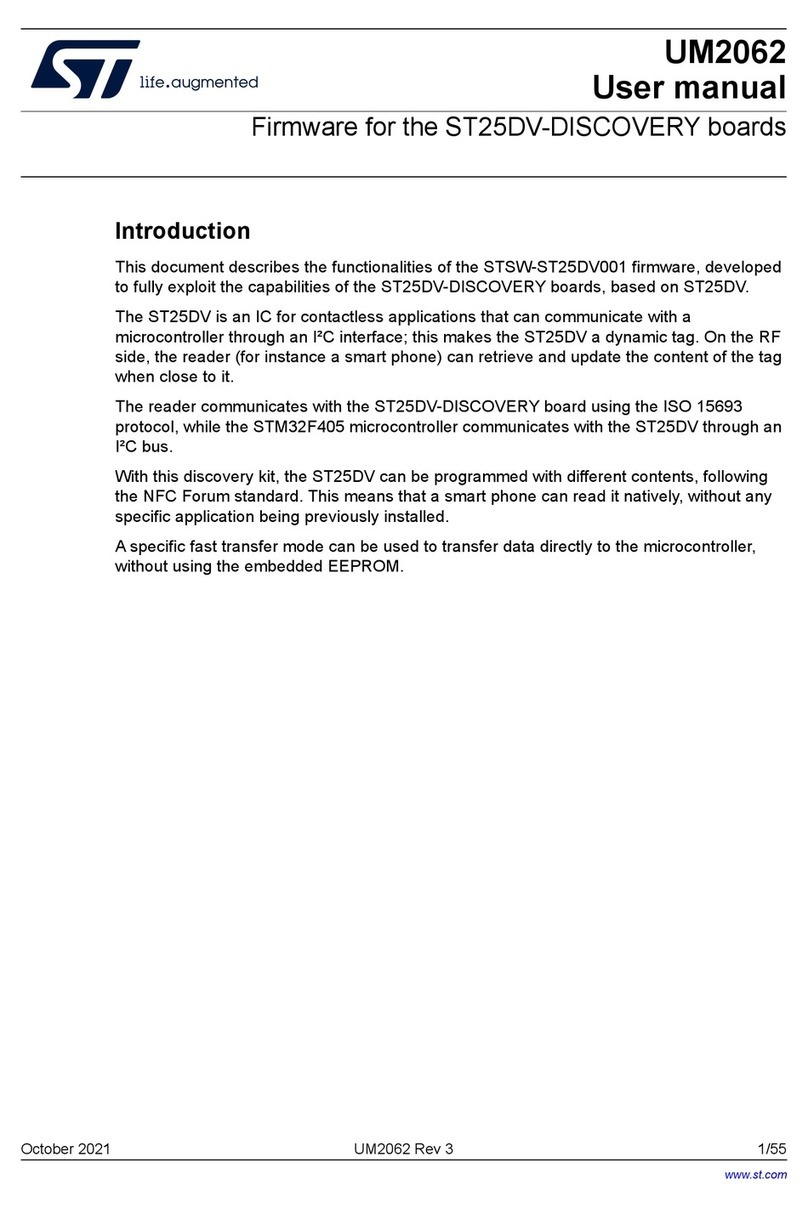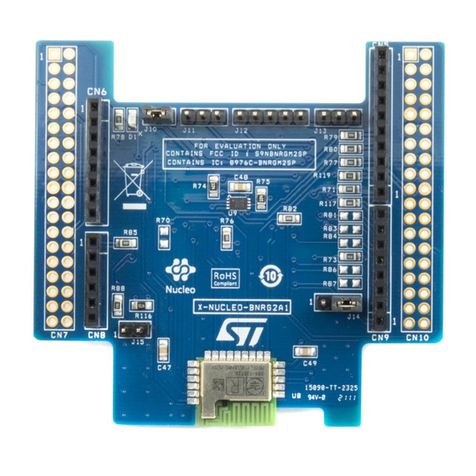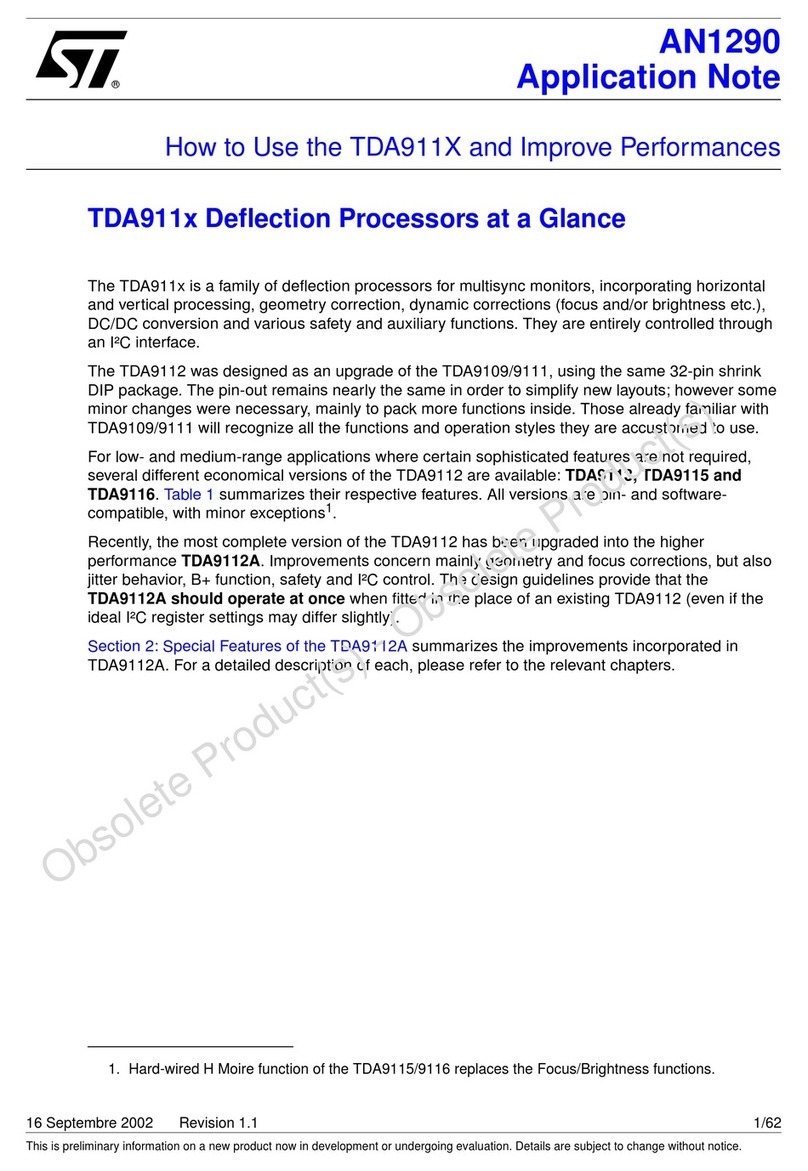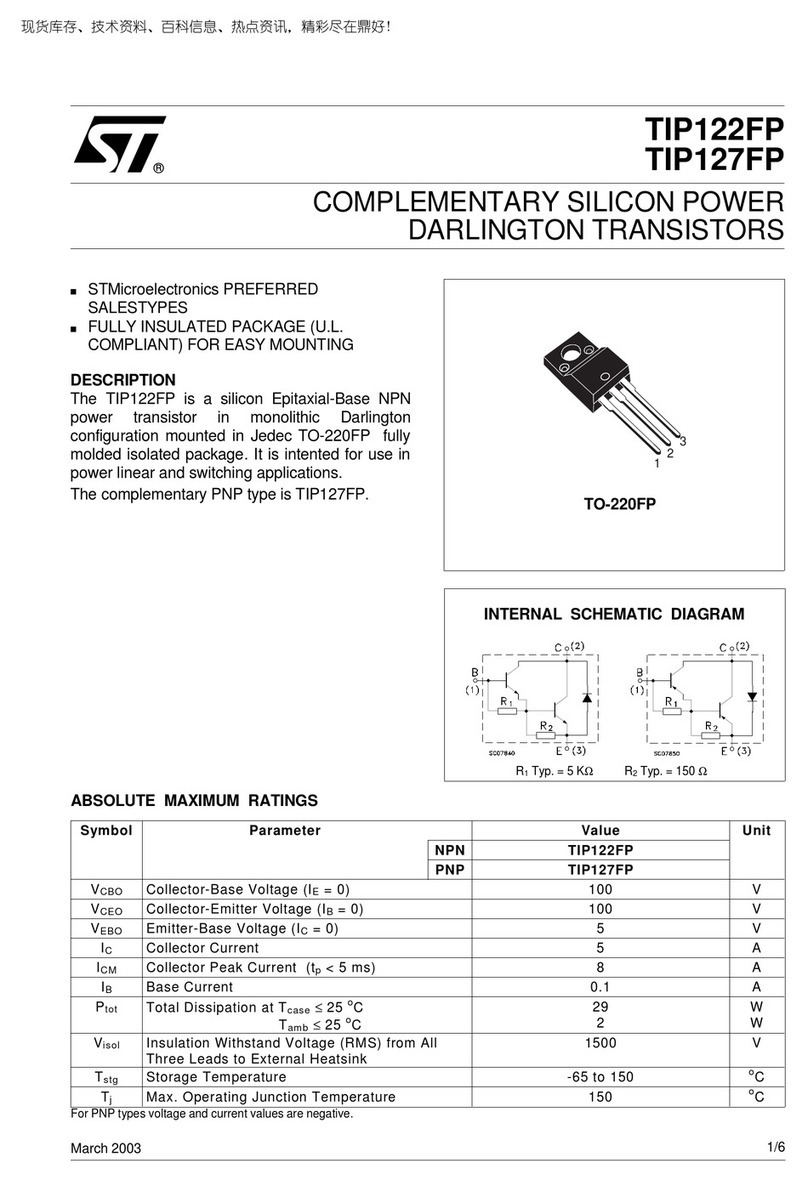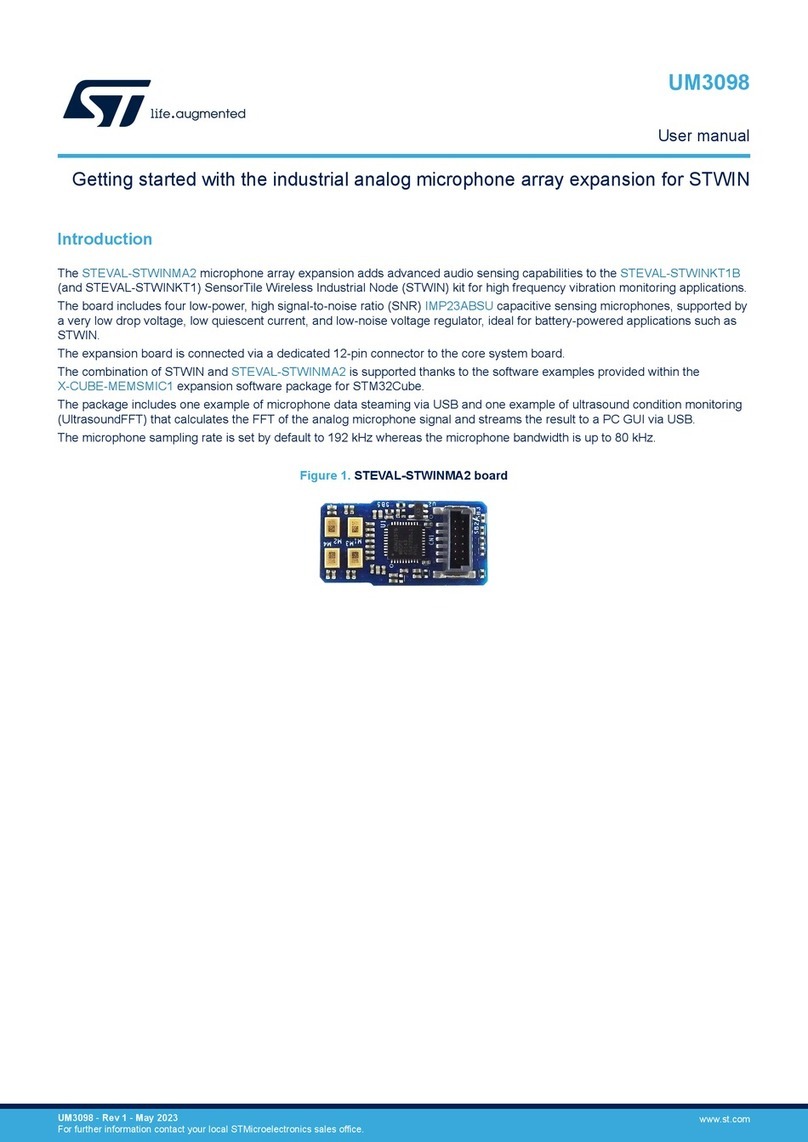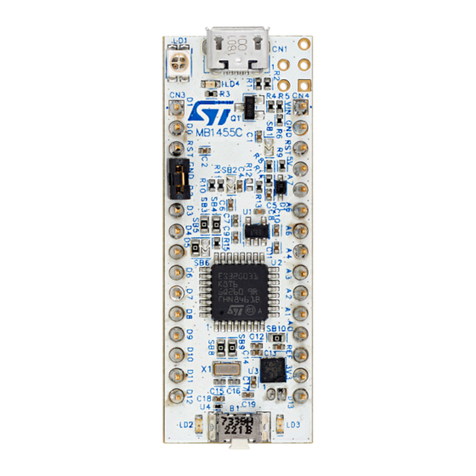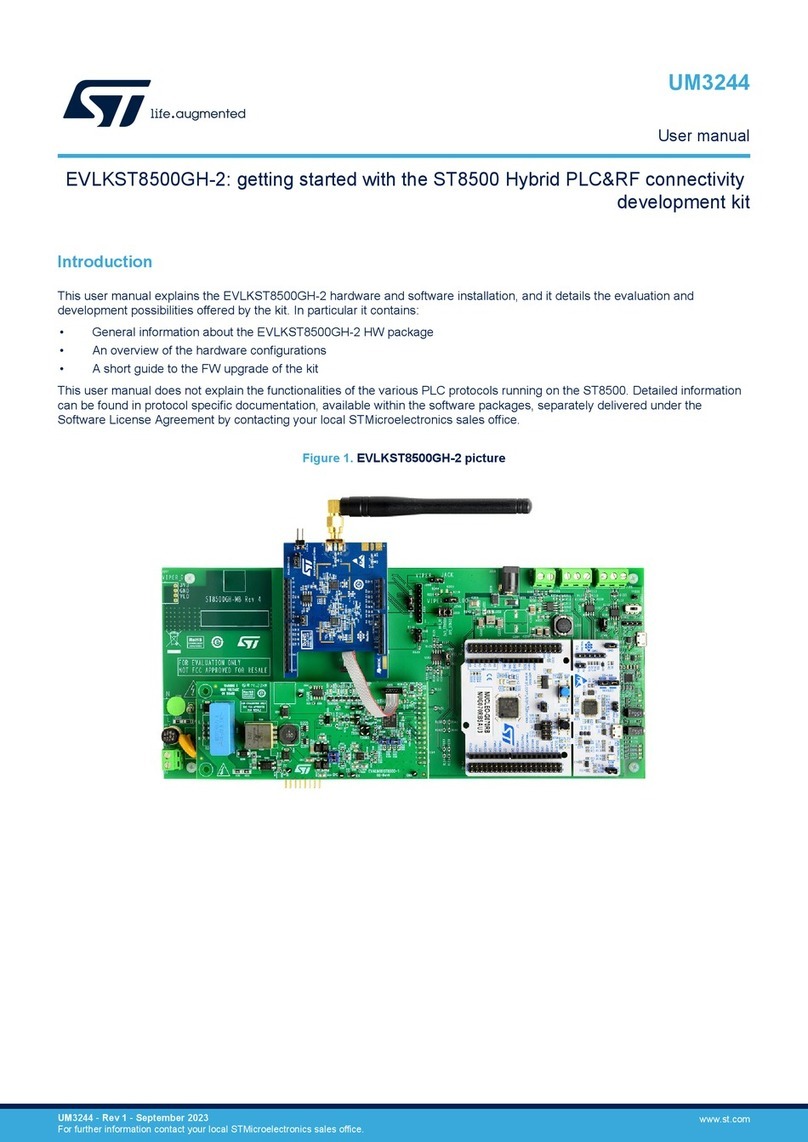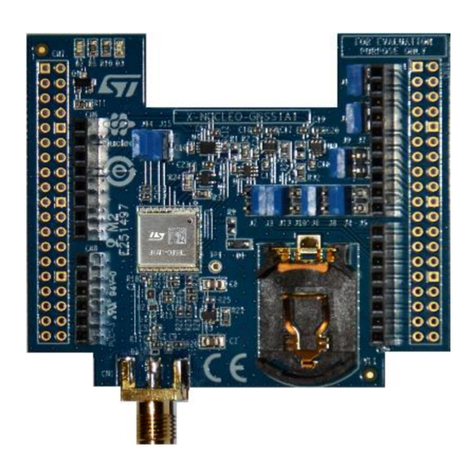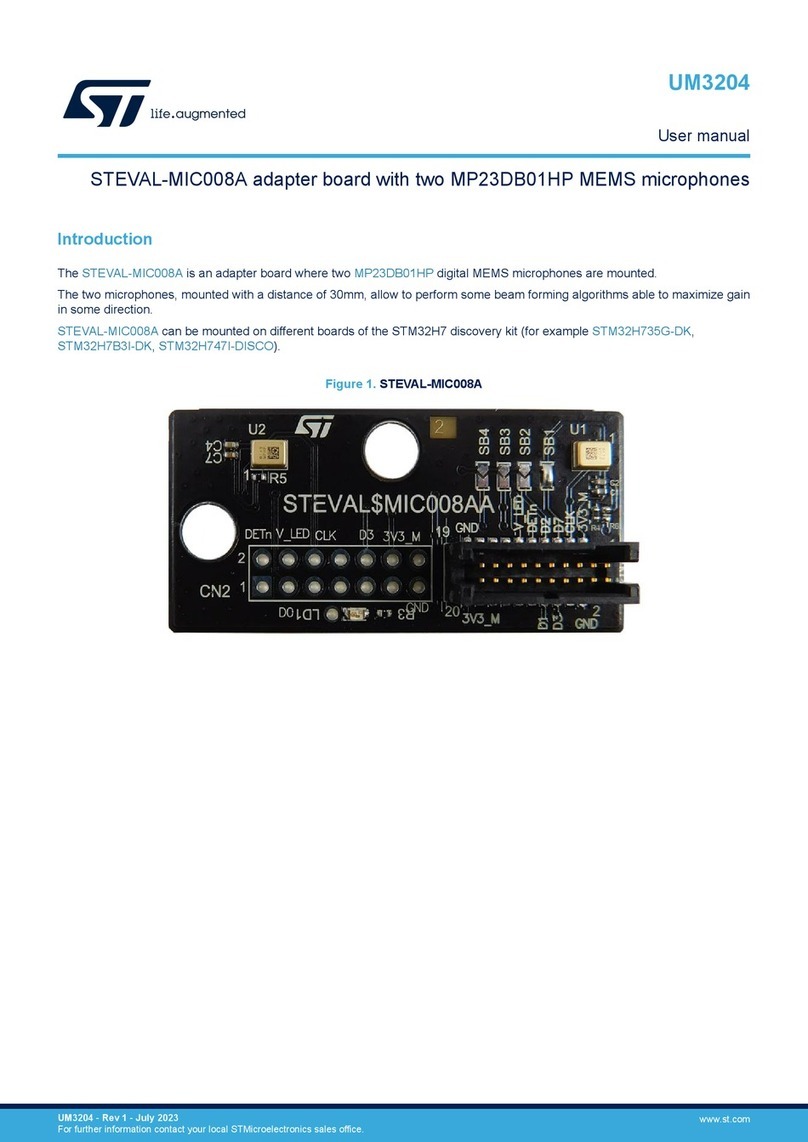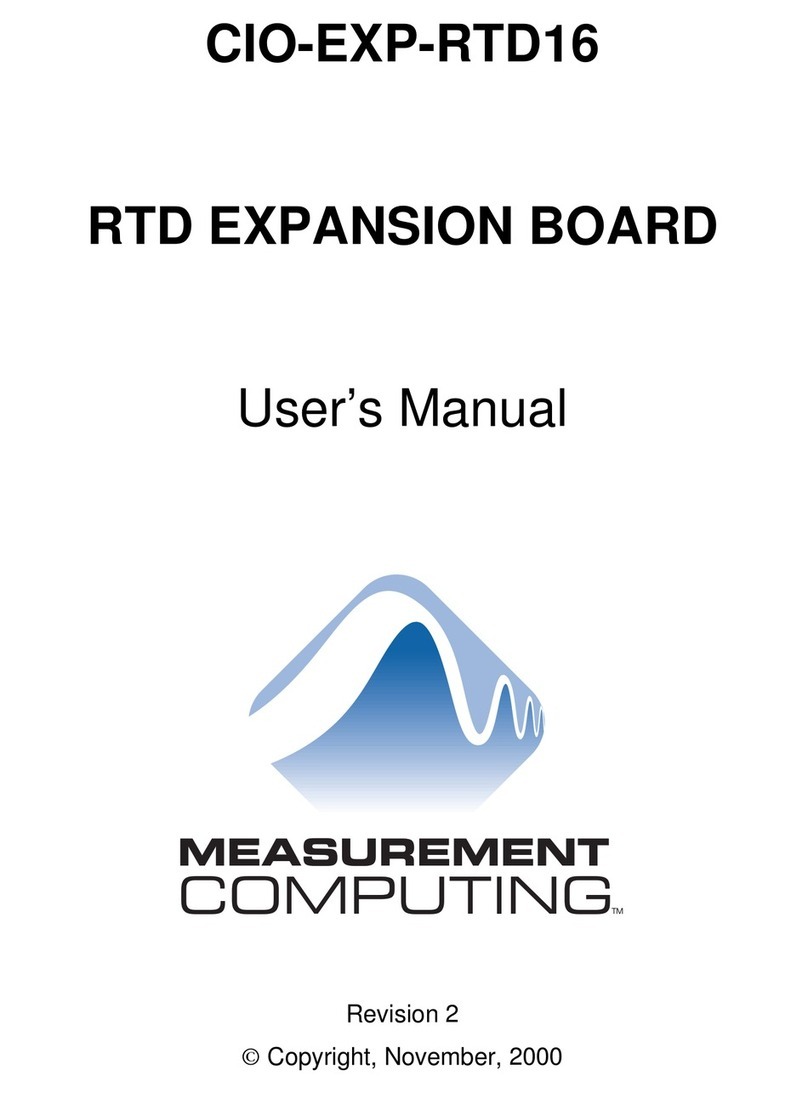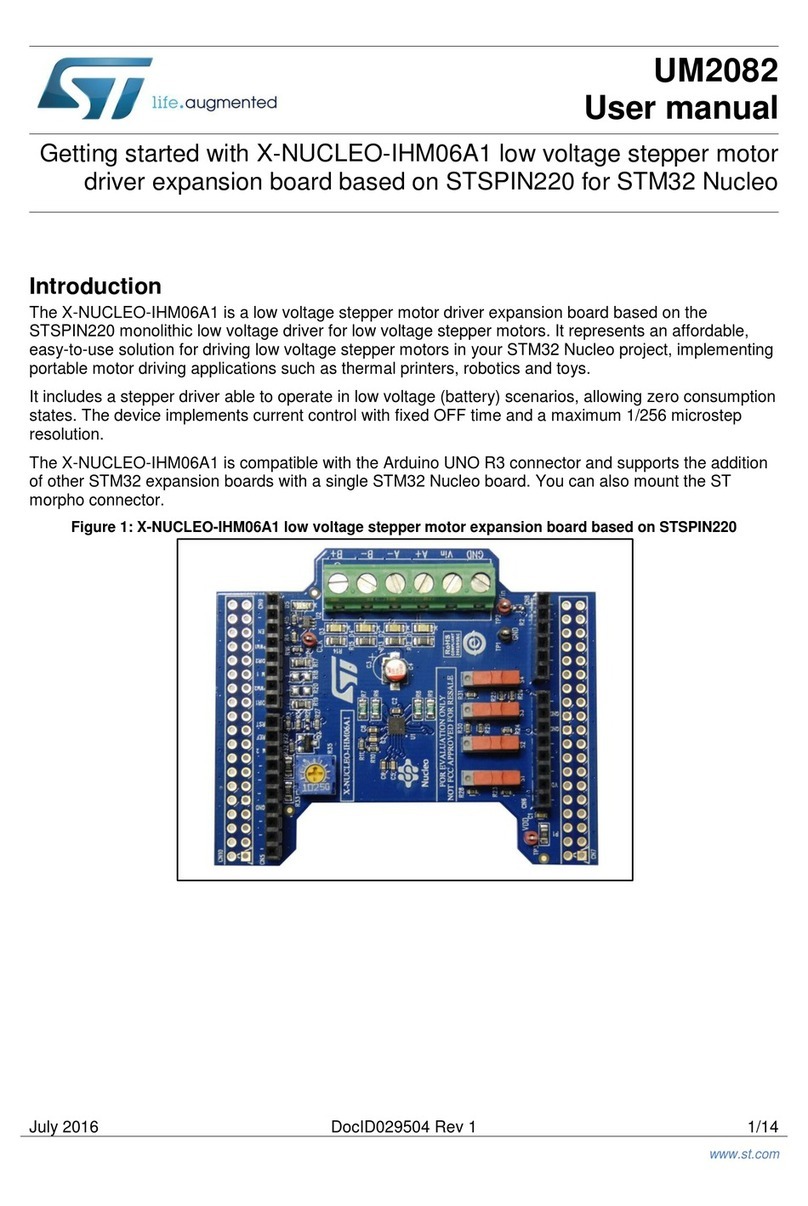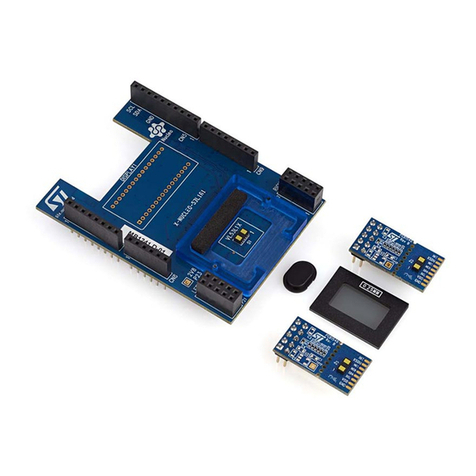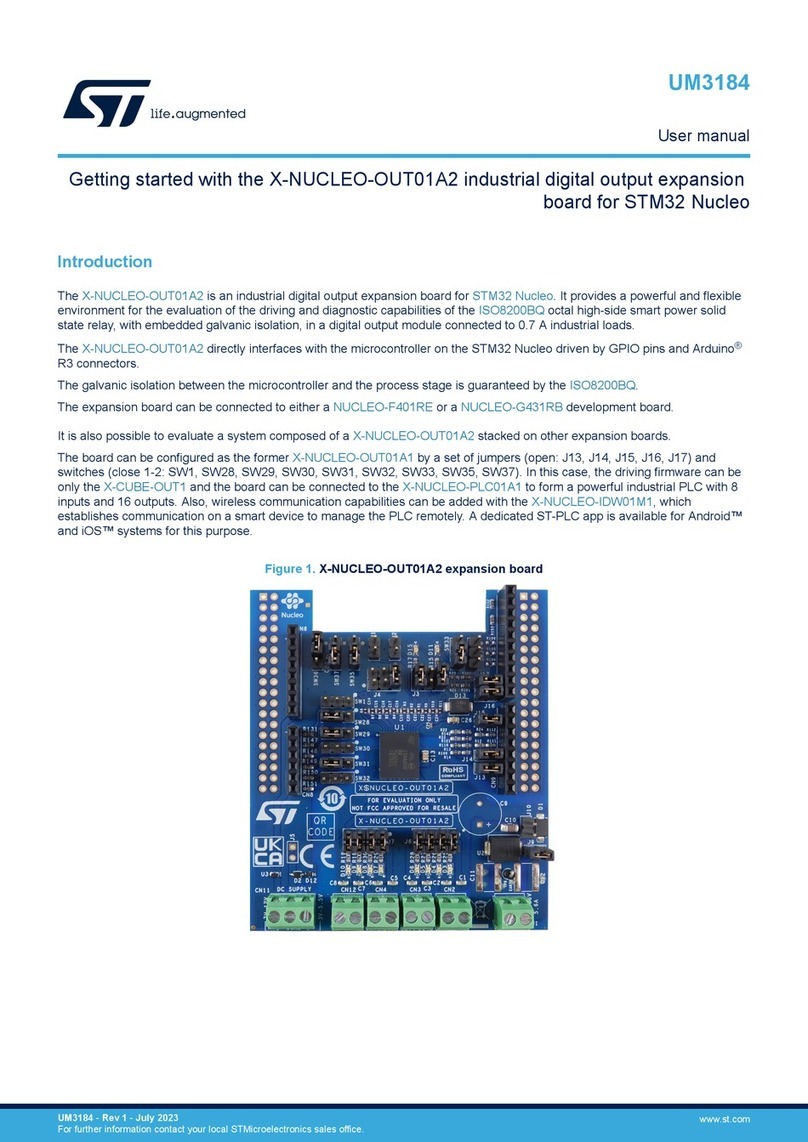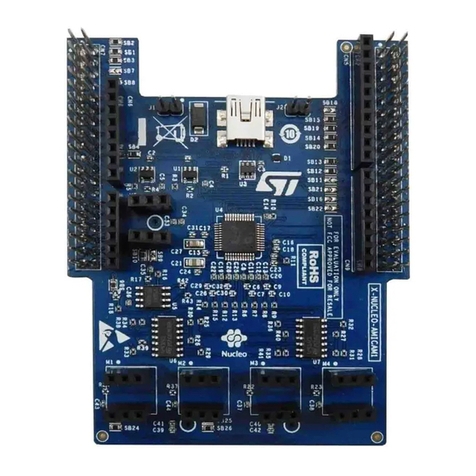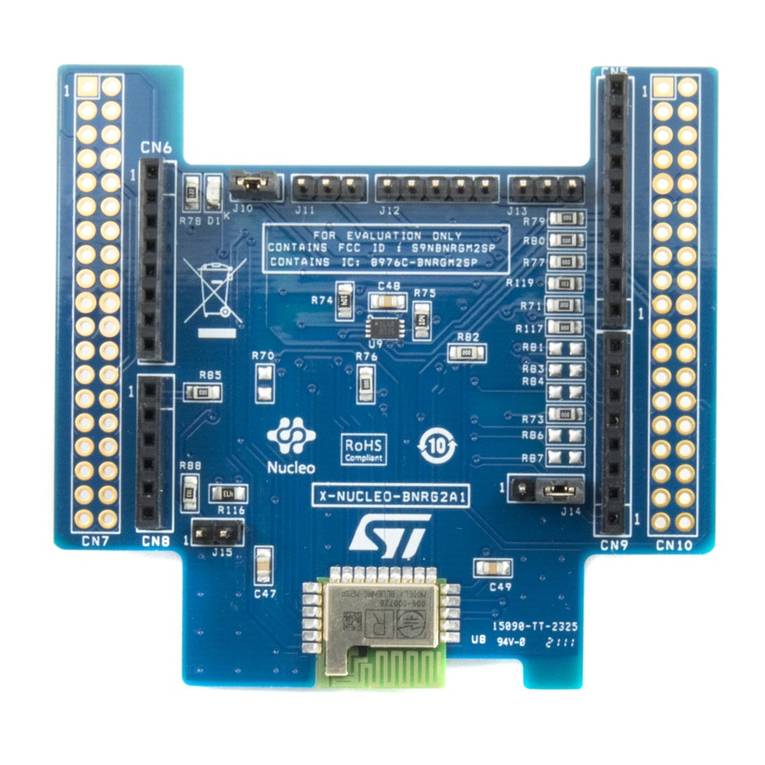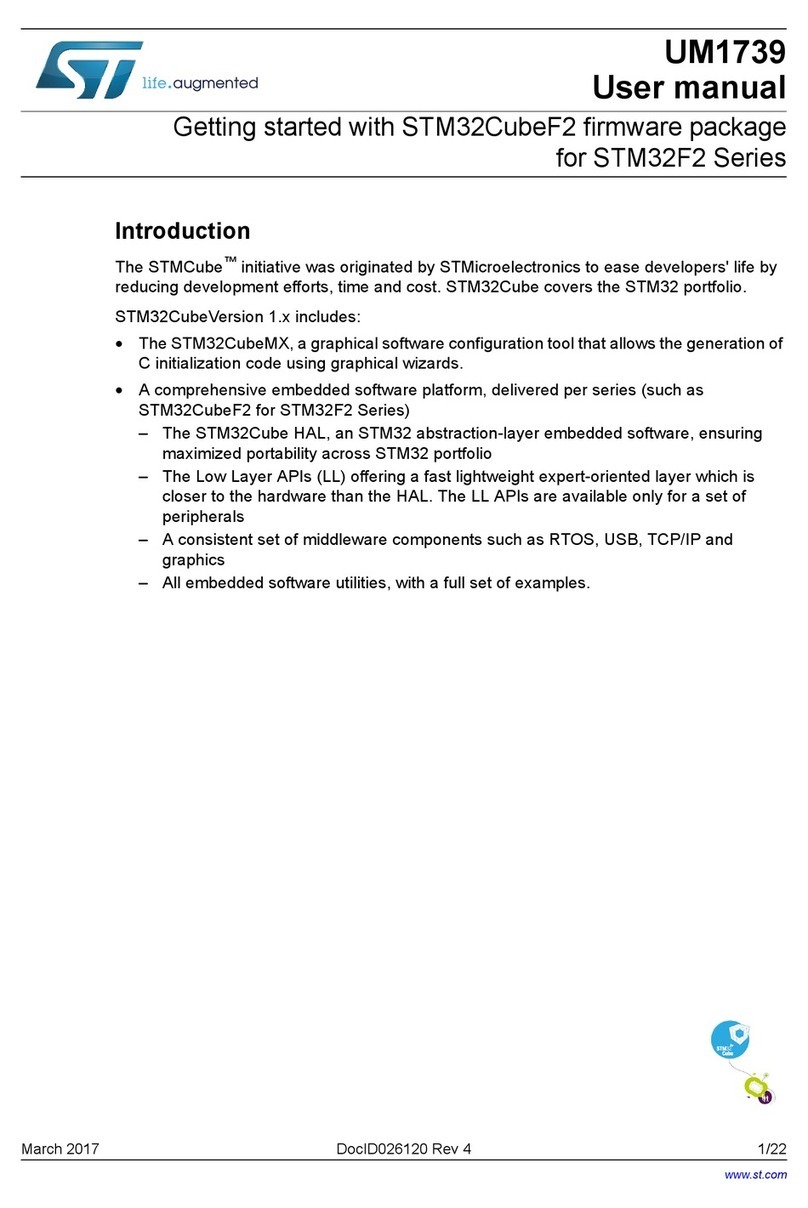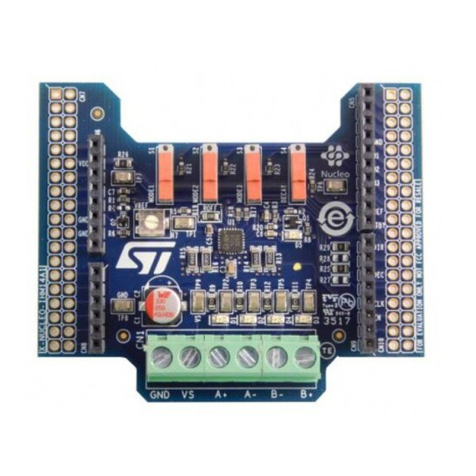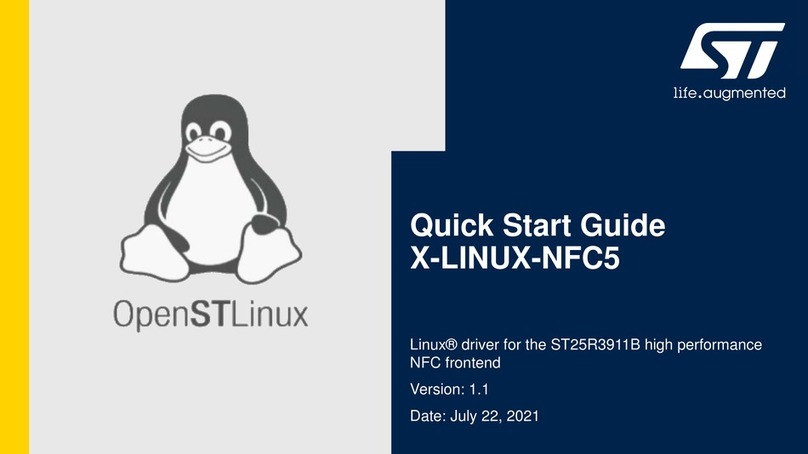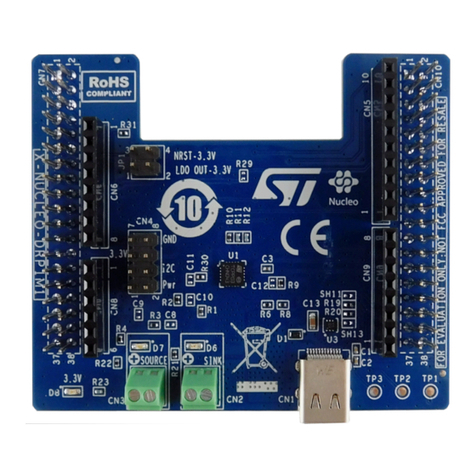
Table 4. CN11 ST-LINK USB Micro-B connector pinout
Pin Pin name Signal name ST-LINK STM32 pin Function
1 VBUS 5V_USB_ST_LINK - VBUS Power
2 DM USB_STLK_N PA11 DM
3 DP USB_STLK_P PA12 DP
4 ID - GND ID
5 GND GND GND GND
6.1.2 Drivers
Before connecting STM32MP157x-DKx to a Windows® (7, 8, or 10) PC via the USB, a driver for ST-LINK/V2-1
must be installed (not required for Windows® 10). It is available from the www.st.com website.
In cases where the STM32MP157x-DKx Discovery kit is connected to the PC before the driver is installed, some
Discovery kit interfaces may be declared as “Unknown” in the PC device manager. In this case, the user must
install the dedicated driver files, and update the driver of the connected device from the device manager.
6.1.3 ST-LINK/V2-1 firmware upgrade
The ST-LINK/V2-1 embeds a firmware upgrade mechanism for in-situ upgrade through the USB port. As firmware
may evolve during the lifetime of the ST-LINK/V2-1 product (addition of new functionalities, bug fixes, or support
of new microprocessor families), visiting the www.st.com website is recommended before starting to use the
STM32MP157x-DKx Discovery kit, then periodically to stay up-to-date with the latest firmware version.
6.2 Power supply
6.2.1 5 V power supply
The STM32MP157x-DKx Discovery kit is designed to be powered by a 5 V DC power source at 3 A maximum
such as:
• 5V_VBUS connected to the CN6 connector through a USB Type-C® to USB Type-C® cable
The two lines USB_PWR_CC1 and USB_PWR_CC2 are connected to PA4 and PA5 respectively to check
what is connected to CN6 and control features enabling:
– Legacy cable
– Personal computer
– 5 V DC power source at 3 A
Depending on the current needed on the devices connected to the USB port, and the board itself, power
limitations can prevent the system from working as expected. The user must ensure that the STM32MP157x-DKx
Discovery kit is supplied with the correct power source depending on the current needed. It is recommended to
use a USB Type-C® to USB Type-C® 5 V/3 A charger.
6.2.2 STPMIC1 power supply
For general information concerning the STPMIC1, refer to the datasheet on the www.st.com website.
STPMIC1 supply
• VDD_CORE (BUCK1) used to supply the core of the STM32MP157x
– Value: 1.2 V
• VDD_DDR (BUCK2) used to supply the DDR core and I/Os
– Value: 1.35 V
• VDD (BUCK3) used to supply the VDDA and VDD domains of the STM32MP157x
– Value: 3.3 V
• 3V3 (BUCK4) used to provide the 3.3 V to the different features available on the Discovery kit
– Value: 3.3 V
UM2637
Power supply
UM2637 - Rev 2 page 10/47
